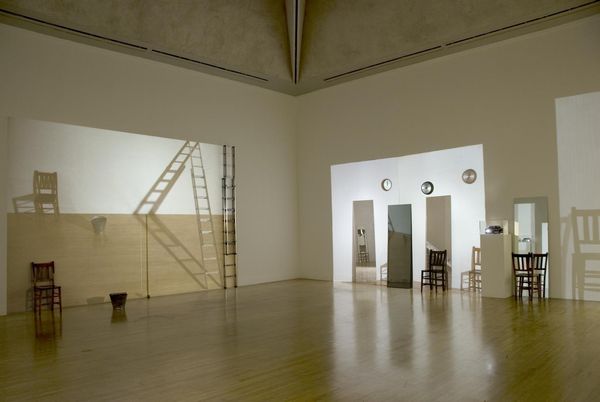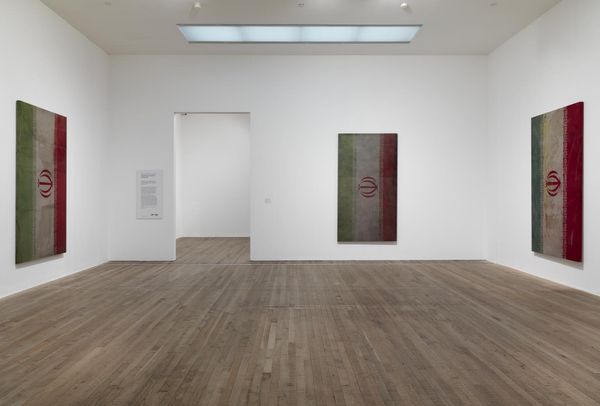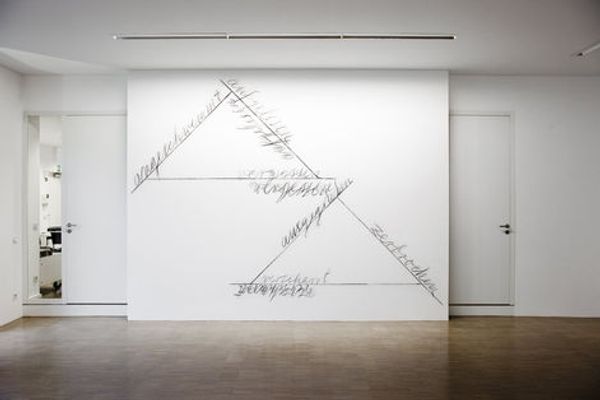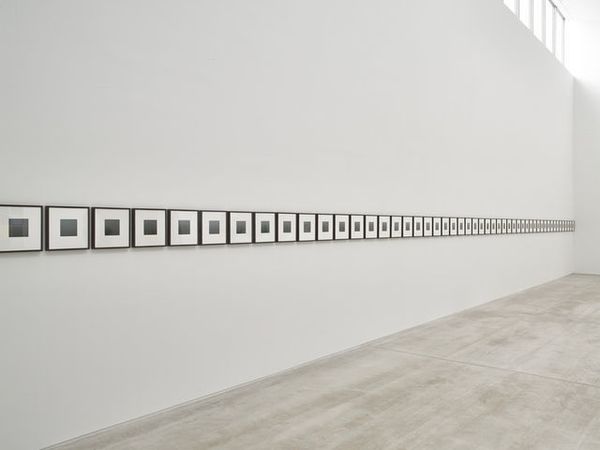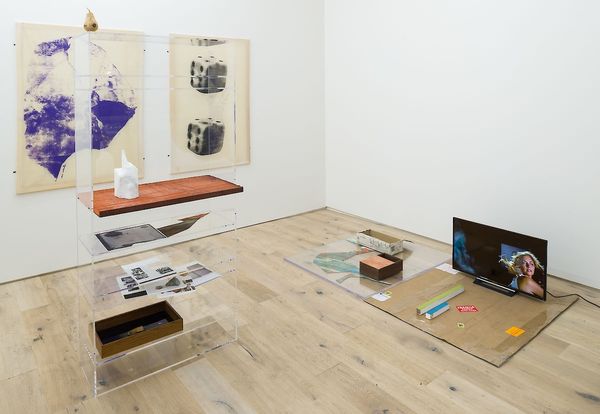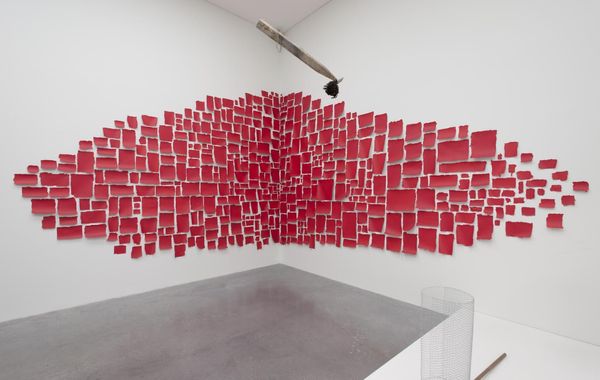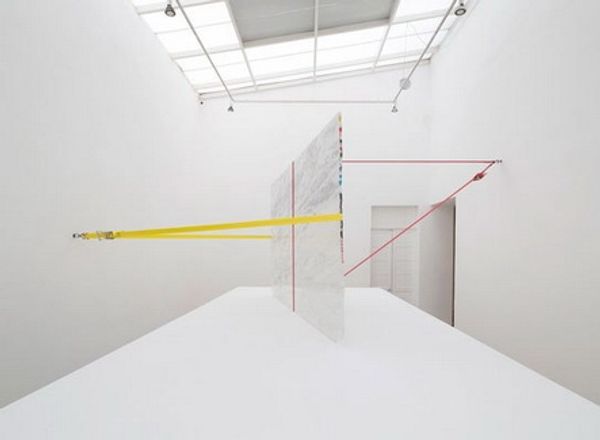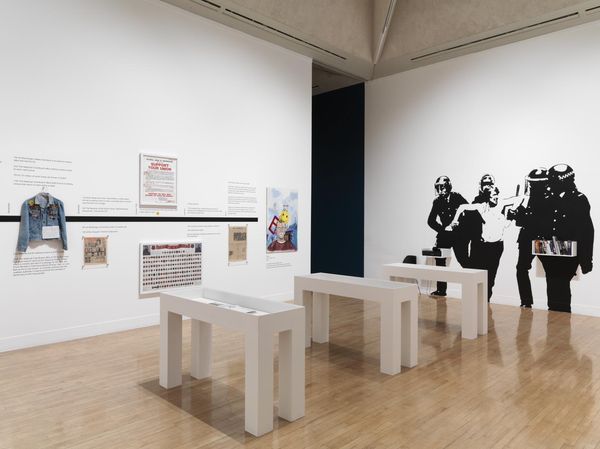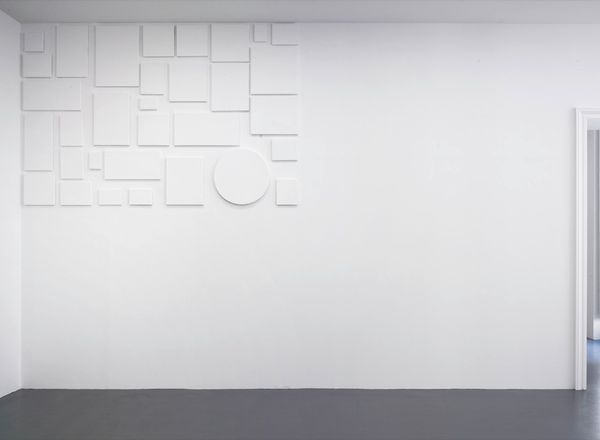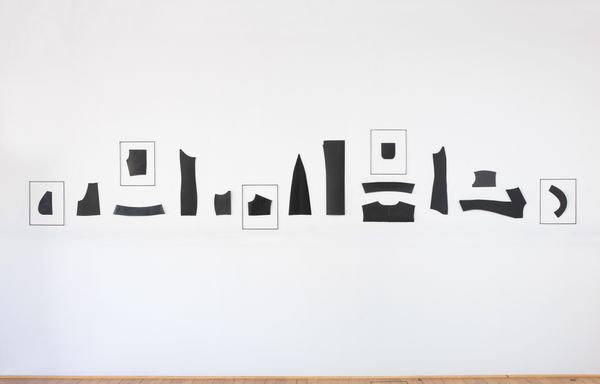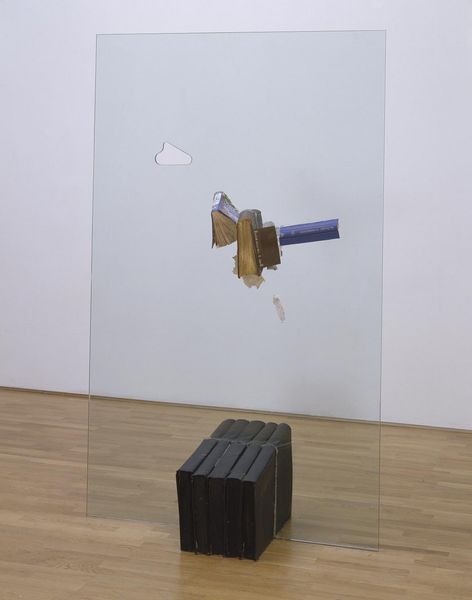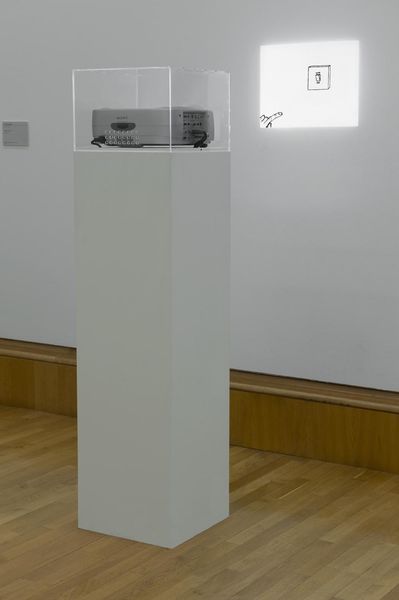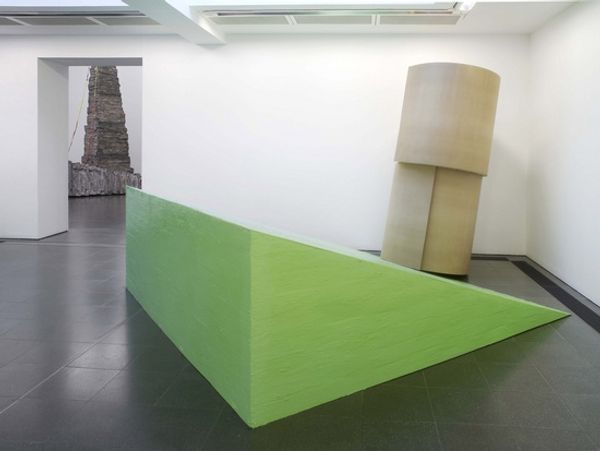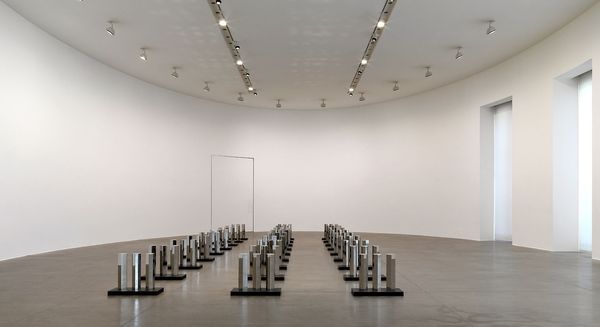
Dimensions: Overall display dimensions variable
Copyright: © Ian Kiaer | CC-BY-NC-ND 4.0 DEED, Photo: Tate
Curator: Ian Kiaer’s "Ulchiro Project" sits here in the gallery. It's wonderfully strange, don't you think? Like a deflated monument. Editor: It strikes me as a poignant commentary on late-stage capitalism, mimicking the inflated promises of consumerism. Curator: Perhaps...Or maybe it's Kiaer inviting us to question the very space we inhabit? The "Ulchiro Project" alludes to a district in Seoul, a place undergoing constant renewal and demolition. Editor: A visual representation of the relentless cycle of urban development, echoing the erasure of history and the displacement of communities. It's a ghostly presence in the gallery. Curator: Precisely. It makes you wonder what's left when the air leaves the room, both literally and figuratively, doesn't it? Editor: Ultimately, the artwork challenges us to confront the transient nature of progress and the social costs we often ignore. Curator: Yes, it's a haunting reminder that nothing lasts forever, but maybe that impermanence is the point. Editor: It leaves you pondering.
Comments
Join the conversation
Join millions of artists and users on Artera today and experience the ultimate creative platform.
tate 6 months ago
⋮
Ulchiro Project is an installation consisting of seven objects that occupy the floor and walls of an otherwise empty gallery space. The largest of the objects is a tall aluminium A-frame on which nothing is displayed. Stretching perpendicularly away from the empty and fragile armature of the A-frame is a large white plastic inflatable that resembles a mattress propped monolithically on one of its ends. The inflated object is constructed out of white plastic rubbish bags. Industrial lettering printed on the sides of the inflatable suggest that the plastic bags were produced in South Korea. Across the gallery from this large angular balloon lies a plank of pink Styrofoam. On one corner of the Styrofoam is stacked a small group of cubes and boxy cut-outs. The sides of these cubes and cut-outs are pasted over with Japanese comics or manga. The final object displayed within the installation is a large rumpled sheet of cardboard that has been propped on one of its edges so as to create a small free-standing wall-like surface. The sides of the beige cardboard show signs of tread-like distress, as if run over by the tyres of a truck. Three separate items are displayed on the gallery’s walls: a small monochromatic red canvas, a small monochromatic white canvas and a much larger and foldable sheet or chart onto which Korean characters have been written.
